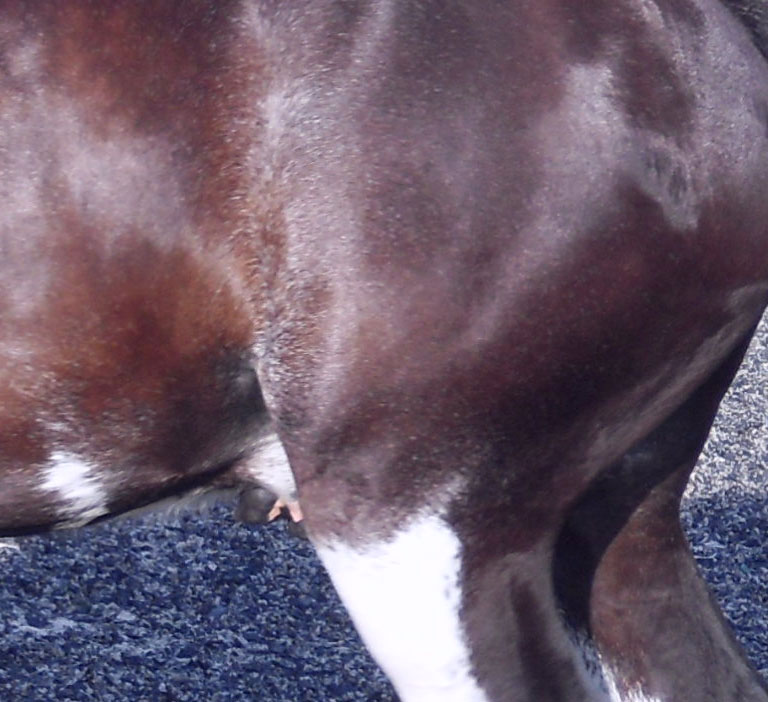
Causes and Treatment of Stifle Injuries in Horses
Stifle injuries are a common concern in horses, particularly those involved in sports or high-intensity activities.
This article aims to provide an overview of the causes and treatment options for stifle injuries in horses.
CAUSES OF STIFLE INJURIES
 Stifle injuries in horses can occur due to a variety of factors, including:
Stifle injuries in horses can occur due to a variety of factors, including:
1. Trauma: Direct trauma to the stifle joint, such as a kick or a fall, can cause injuries to the ligaments, tendons, or bones in the area.
2. Overexertion: Intense exercise or overtraining without proper conditioning can put excessive strain on the stifle joint, leading to injuries.
3. Congenital Defects: Some horses may be born with structural abnormalities in the stifle joint, predisposing them to injuries later in life.
4. Poor Hoof Balance: Imbalanced hooves can affect the horse's gait, leading to increased stress on the stifle joint and potential injuries.
5. Degenerative Conditions: Conditions like osteoarthritis can develop over time, causing the stifle joint to become more susceptible to injuries.
TREATMENT OF STIFLE INJURIES
The treatment approach for stifle injuries in horses depends on the severity and specific nature of the injury. Here are some common treatment options:
1. Rest and Rehabilitation: Mild stifle injuries may require a period of rest to allow the tissues to heal. Controlled exercise and rehabilitation programs, supervised by a veterinarian or equine therapist, can help restore strength and mobility.
2. Medications: Non-steroidal anti-inflammatory drugs (NSAIDs) may be prescribed to manage pain and reduce inflammation in the stifle joint. Joint supplements containing ingredients like glucosamine and chondroitin may also be recommended to support joint health.
3. Physical Therapy: Modalities such as therapeutic ultrasound, laser therapy, and massage can aid in reducing pain, improving circulation, and promoting healing in the stifle joint.
4. Surgery: In more severe cases, surgical intervention may be necessary. Procedures such as arthroscopy, joint fusion, or ligament reconstruction may be performed to repair damaged tissues and restore joint function.
5. Supportive Measures: The use of supportive devices like braces, bandages, or boots can provide stability and protect the stifle joint during the healing process.
PREVENTION OF STIFLE INJURES
Preventing stifle injuries in horses involves several measures, including:
1. Proper Conditioning: Gradually building up the horse's fitness and strength, along with regular exercise, can help prepare the stifle joint for physical activity.
2. Balanced Hoof Care: Regular farrier visits to maintain proper hoof balance and address any existing hoof imbalances can help prevent gait abnormalities that may contribute to stifle injuries.
3. Regular Veterinary Check-ups: Routine veterinary examinations can help identify any early signs of stifle issues and allow for timely intervention.
4. Appropriate Warm-Up and Cool-Down: Adequate warm-up exercises before exercise and proper cool-down routines afterward can help prevent sudden stress on the stifle joint.
SUMMARY
Stifle injuries in horses can be caused by various factors, ranging from trauma to degenerative conditions.
Treatment options include rest, rehabilitation, medications, physical therapy, and surgery, depending on the severity of the injury.
Preventive measures such as proper conditioning, balanced hoof care, regular veterinary check-ups, and appropriate warm-up and cool-down routines can help minimize the risk of stifle injuries in horses.